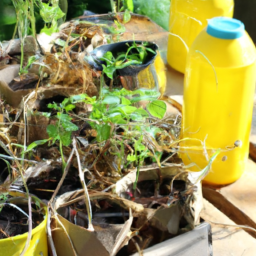Electroculture Gardening How To
Electroculture Gardening How To
Electroculture Gardening - A Comprehensive Guide
Electroculture is the practice of utilizing electricity and electromagnetic fields to increase crop yields and the health of plants. It is an innovative yet largely underused precision agri-technology that could revolutionize gardening and agriculture if widely adopted. Theoretically, electroculture could eliminate the need for chemical fertilizers, pesticides, herbicides, and other polluting and destructive practices while helping to conserve resources and reduce production costs.
What is Electroculture Gardening?
Electroculture gardening is an innovative scientific approach to horticulture that relies on the application of electricity and electromagnetic energy to enrich and protect crops. By applying electricity in different intensities and frequencies to roots, stems, and leaves, certain desired growth and flowering results can be obtained. This type of gardening is also known as electrical gardening', electroponic gardening', and electro-agriculture'.
History of Electroculture Gardening
The history of electroculture gardening can be traced back to the 1920s. It was discovered when researchers in France observed that plants grew better in the vicinity of a nearby electrified rail line. A team of French scientists soon began experiments to understand the phenomenon and developed the first commercially available electroculture-based system in 1929. Since then, scientists and engineers have used electroculture technology to help improve crop yields, pest control, and seed germination.
Benefits of Electroculture Gardening
The use of electroculture in gardening provides many benefits to both the plants and the gardener. Electroculture has been shown to increase the growth rate of plants and improve yields by up to 25%. It also helps to reduce pesticide usage and ensures that plants remain healthy and disease-free. Additionally, it helps enhance the flavor and aroma of the produce. Electroculture gardening is an eco-friendly and humane approach as it reduces the amount of water required and serves to protect beneficial insects and reduce harmful ones.
How to Establish an Electroculture Garden
Establishing an electroculture garden is a relatively simple process. The basic requirements are an electroculture generator, wires, and soil. First, the soil must be prepared and fertilized, then the generator and wires should be set up according to the manufacturer's instructions. Once the system is in place, periodic checks must be made to ensure the generator is operating correctly. Finally, the plants should be placed in the soil and the electroculture system turned on.
Technology Required for Electroculture Gardening
The technology used in electroculture gardening is relatively simple. A generating unit, which converts electricity into a low-voltage current, is the most important piece of equipment. This is often referred to as the transformer. Wires are then placed to form an electrical grid through which the current is transmitted. The current stimulates and nourishes the plants and soil.
Tips for Successful Electroculture Gardening
- Choose the right type of soil.
- Check the wiring to make sure it is secure and in good condition.
- Monitor the soil's moisture levels regularly.
- Harvest early to ensure the best flavor and texture of the produce.
- Follow the manufacturer's instructions for the electroculture generator.
Insights
Electroculture Gardening is an innovative, eco-friendly, and humane approach to gardening that can reduce the amount of water used and increase the yields of crops. The technology is relatively simple and the setup is straightforward. Following the tips above can help ensure success in electroculture gardening.

Previous Page
Next Page
